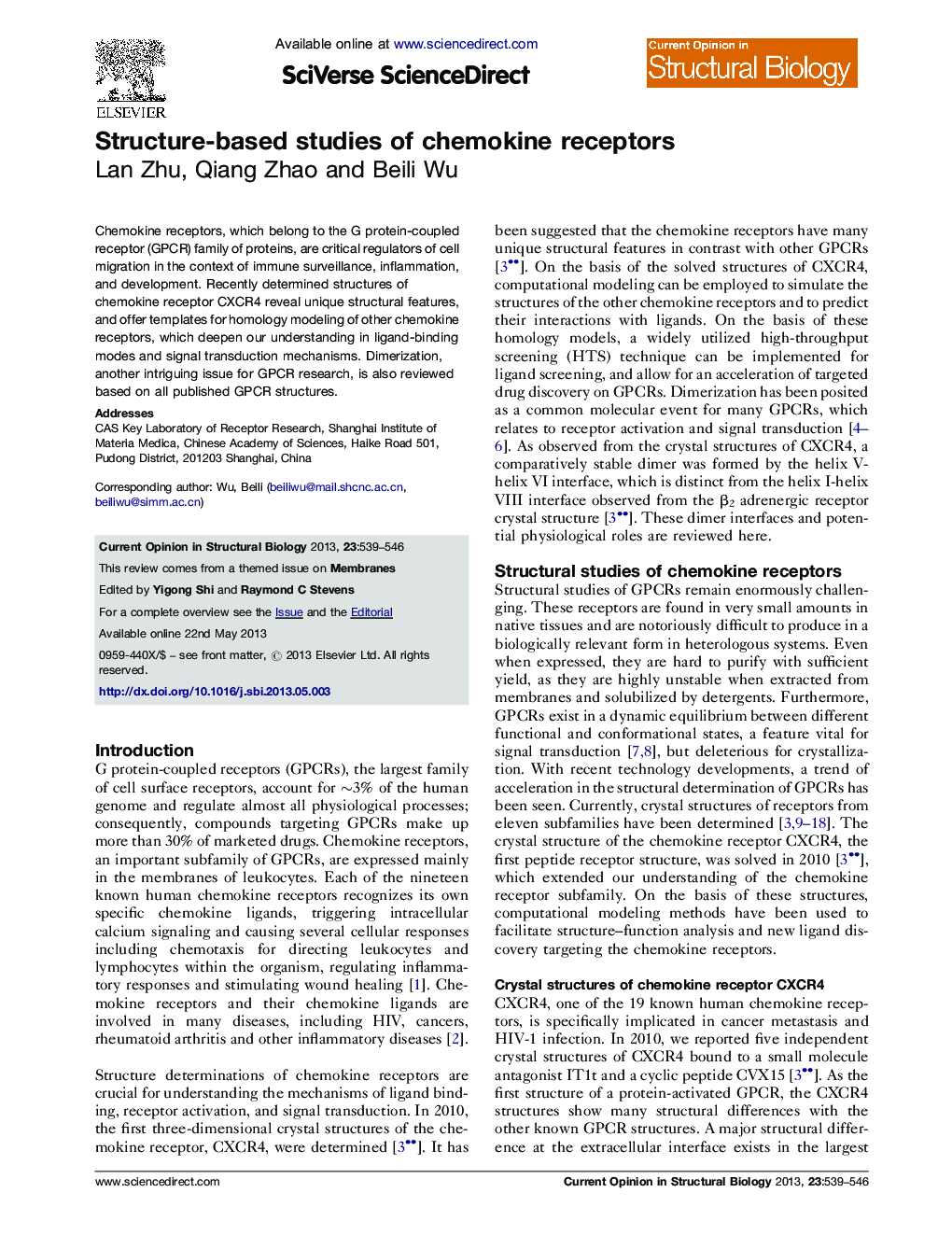| Article ID | Journal | Published Year | Pages | File Type |
|---|---|---|---|---|
| 1979304 | Current Opinion in Structural Biology | 2013 | 8 Pages |
•Solved three-dimensional chemokine receptor structures — CXCR4.•Ligand-binding modes and activation mechanisms of chemokine receptors.•Combined computational methods facilitate drug discovery on chemokine receptors.•Dimerization — receptor–receptor interfaces and their physiological roles.
Chemokine receptors, which belong to the G protein-coupled receptor (GPCR) family of proteins, are critical regulators of cell migration in the context of immune surveillance, inflammation, and development. Recently determined structures of chemokine receptor CXCR4 reveal unique structural features, and offer templates for homology modeling of other chemokine receptors, which deepen our understanding in ligand-binding modes and signal transduction mechanisms. Dimerization, another intriguing issue for GPCR research, is also reviewed based on all published GPCR structures.
